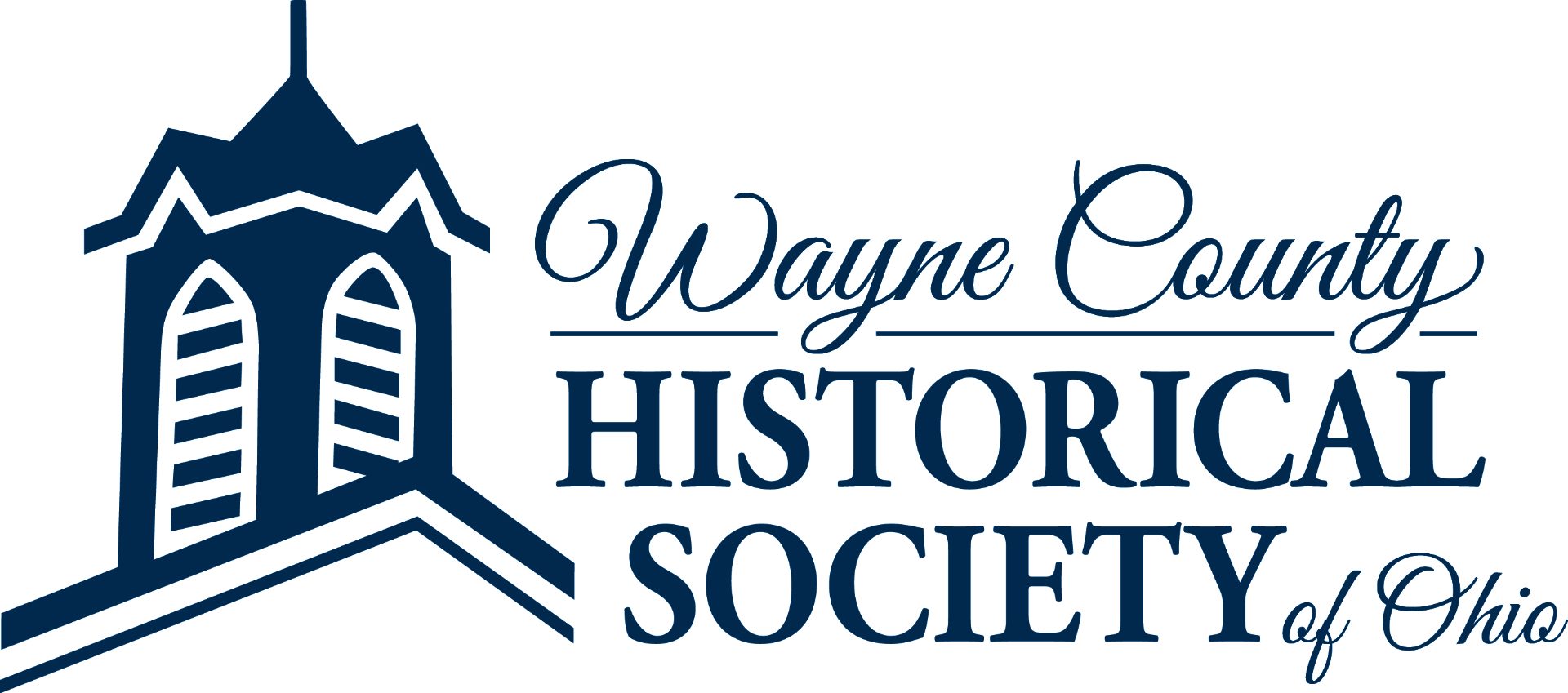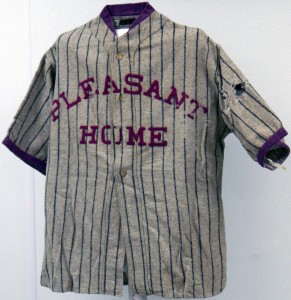
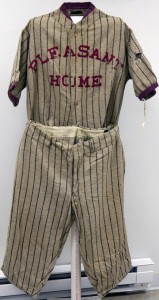
The Pleasant Home baseball uniform donated to the Society by James Miley has a manufacturer tag labeled the Draper & Maynard Co. that includes their trademark logo depicting Maynard’s bird dog, Nick, also known as the “Lucky Dog”. Which helps date the uniform as being produced after 1900. According to the New Hampshire Historical Society,
The partnership of Jason F. Draper (1850-1913) and John Maynard (1846-1937) began in Ashland, NH, in 1881 with the production of buckskin gloves, an industry which was already well established in the Ashland-Plymouth, New Hampshire area. One year later, 1882, the firm became a pioneer in the manufacture of baseball gloves when it produced one of the first padded models at the suggestion of a baseball player. It was reported to be the first company in the country to design baseball gloves for specific fielding positions.
Upon moving to a new factory in Plymouth, NH in 1900, the Draper-Maynard Company became a major supplier of baseball equipment for both amateur and professional teams, and was also widely known for its other lines of sporting goods. A new trademark was soon adopted, depicting Maynard’s bird dog, Nick.
Production of baseball equipment reached a peak in the 1920s, when the company claimed that over 90% of major league players used Draper-Maynard gloves. The firm supplied all types of baseball products, including uniforms. An increasing variety of sporting goods was offered in the 1930s, but the business closed in Plymouth in 1937 after the death of John Maynard, who had survived his partner by 24 years. In that same year, P. Goldsmith Sons Company of Cincinnati, Ohio, purchased the rights to produce sporting goods bearing the Draper-Maynard name and Lucky Dog trademark. Goldsmith stopped manufacturing Draper-Maynard products in 1962 when they merged with MacGregor Sporting Goods.
The D&M Company, Ltd., of Tokyo, Japan, which acquired rights to the D&M name in 1902 when they started importing Draper-Maynard products, continues to manufacture protective athletic equipment under that name. Because their records were lost during World War II, the company was not aware of its connection with Plymouth, New Hampshire, until they did research for their centennial celebration in 2001.
The exploits of area baseball teams dominated the sports columns of local newspapers from early April to the end of September in the early 1900s. Although nothing could be found relating to games played by the Pleasant Home team in the local newspapers early maps indicate there was a schoolhouse No. 9 located at Pleasant Home village and it is likely a Pleasant Home school team uniform.
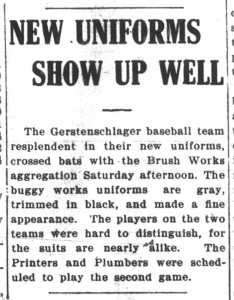
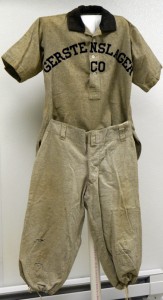
The early games were almost always played on the College of Wooster baseball field as it was the best field in Wooster at the time. But many of the players from the south end of town got tired of walking up the hill and having to plan their games around the University’s baseball schedule which lasted through June. They eventually made an agreement with the Baltimore & Ohio Railroad Co. to lease a small amount of land behind the depot on Columbus Ave. to build their own baseball diamond to hold practice and games.
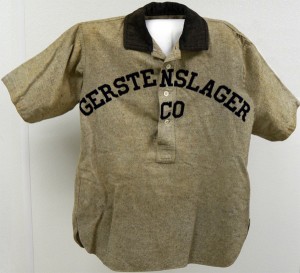
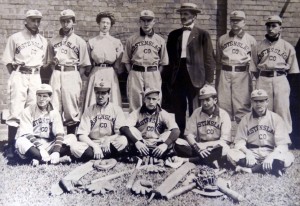
The Gerstenslager Co. team of 1909 was one of the best teams in the area. The team roster listed Zarlengo as short stop, a Massaro as catcher, Ben Alcock pitching, another Massaro on 3rd base, Onesto on 1st base, Van Over in left field, Eggleston in center field, Leisey in right field, and Long on 2nd base.
The Gerstenslager baseball uniform was donated to the Wayne County Historical Society by Dwight Burkey in 1986. Burkey, a current resident at Wayne Manor of the Sprenger Health Care Centers, reported that the uniform originally belonged to his Uncle, Calvin Burkey, who played on the Gerstenslager baseball team around the time of WWI. Eventually Calvin Burkey passed it on to his brother, Chester, who passed the uniform on to his son, Dwight Burkey, who shared it with all of Wayne County by donating it to the Wayne County Historical Society where it is a treasured piece of local sports history.
